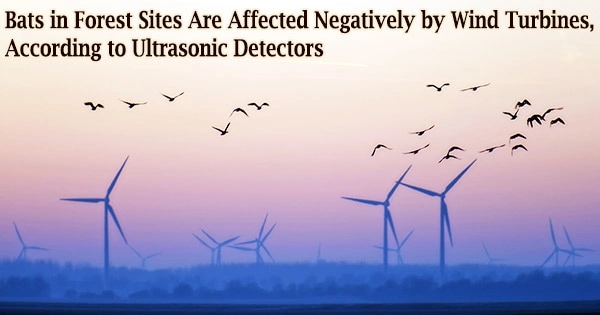The search for suitable areas is getting harder as more wind turbines (WTs) are constructed as part of the energy transition and distance requirements from human populations are enforced. As a result, wind turbines are being built in forests more frequently, harming bats that specialize in forests.
Researchers from the Leibniz Institute for Zoo and Wildlife Research (Leibniz-IZW) have shown in a new study that forest experts among bats avoid areas near wind turbines because they graze below treetops, where there is less chance of collision.
The team comes to the conclusion in a report that has just been published in the Journal of Applied Ecology that forest areas should either not be used at all for wind turbines, or only in exceptional situations with required compensatory measures to safeguard forest bats.
In order to achieve the objectives of national climate programs, wind turbines are being constructed more and more frequently worldwide. Currently, there are about 30,000 onshore wind turbines operating in Germany.
However, there are just a few open spaces close to towns and villages where wind turbines are permitted. For this reason, wind turbines are being built in forests more frequently.
“Forests are sensitive ecosystems and valuable habitats for many rare and protected bat species,” says Dr. Christian Voigt, Head of the Department of Evolutionary Ecology at Leibniz-IZW.
“Wind turbines in forests can cause problems for bats in several ways. Bats that hunt for insects above the treetops can be killed directly at the turbines if they collide with the rotor blades or do not survive the intense air pressure differences near the blades. Bats that hunt in the vegetation below the treetops lose part of their habitat because of the creation of clearings.”
If they are disturbed by the operation of the turbines, their habitat may also deteriorate in the area surrounding wind turbines and clearings.
Wind turbines in forests can cause problems for bats in several ways. Bats that hunt for insects above the treetops can be killed directly at the turbines if they collide with the rotor blades or do not survive the intense air pressure differences near the blades. Bats that hunt in the vegetation below the treetops lose part of their habitat because of the creation of clearings.
Dr. Christian Voigt
Voigt and his student, along with colleagues from Phillips-Universität Marburg and Kiel University, focused on the bats that hunt under the treetop in the cover of the flora.
At 24 woodland areas in Hessen, they used ultrasound detectors to track the activity of bats at various ranges from the wind turbines. The recorded bat cries were divided into three groups by the scientists.
First are the species that hunt in open spaces, such as above treetops, followed by the species that hunt near structures on the edges, and finally, the species that specialize in foraging in small spaces, such as forest specialists below the canopy like bats from the genera mouse-eared bats (Myotis) or long-eared bats (Plecotus).
“These forest specialists were significantly less active close to wind turbines, especially near turbines with large rotors, and during midsummer months,” says Voigt.
The activity of these bats decreased by about 50% close to wind turbines starting from a distance of 450 meters.
Thus, in addition to directly threatening bats that seek insects above treetops, wind turbines at forest sites also harm bats that reside below treetops in the forests and hunt insects there.
“Even though forest specialists are not at risk of colliding with turbines, they are nonetheless suffering from wind turbines in forests due to habitat loss as they avoid operating wind turbines over a distance of several hundred meters,” concludes Voigt.
Therefore, the authors advise against placing wind turbines inside of woods; rather, they should be placed in open spaces, especially near-natural forests with a diverse vegetation structures. In the event that wind turbines must be built in a forest, compensatory measures are necessary.
In order to make up for the habitat loss brought on by the operating of the turbines, a crucial part of these required compensatory measures should be to reserve a suitably sizable section of forest as a wilderness area for forest specialist bats.





